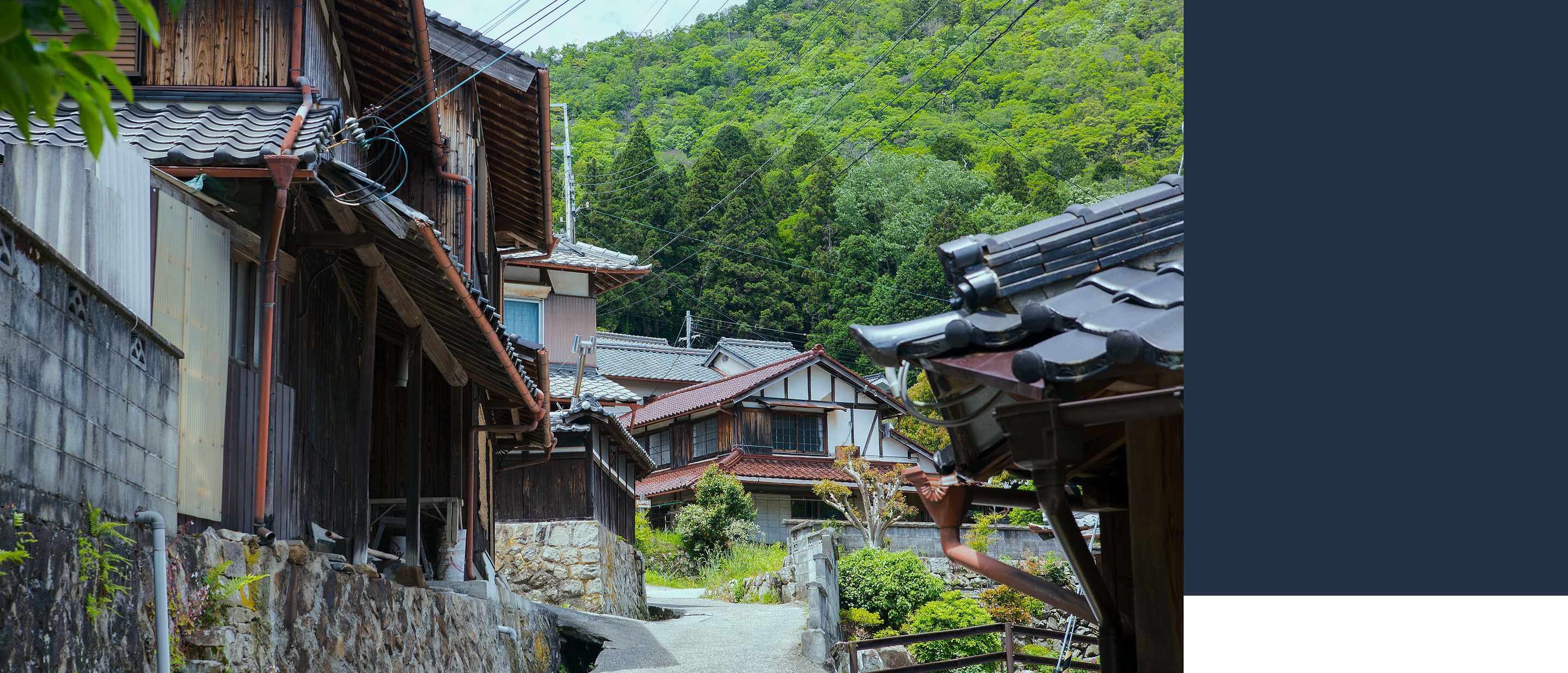Explore the main tourist attractions in Tachikui,
the home of Tambayaki.
Tachikui Sightseeing Map
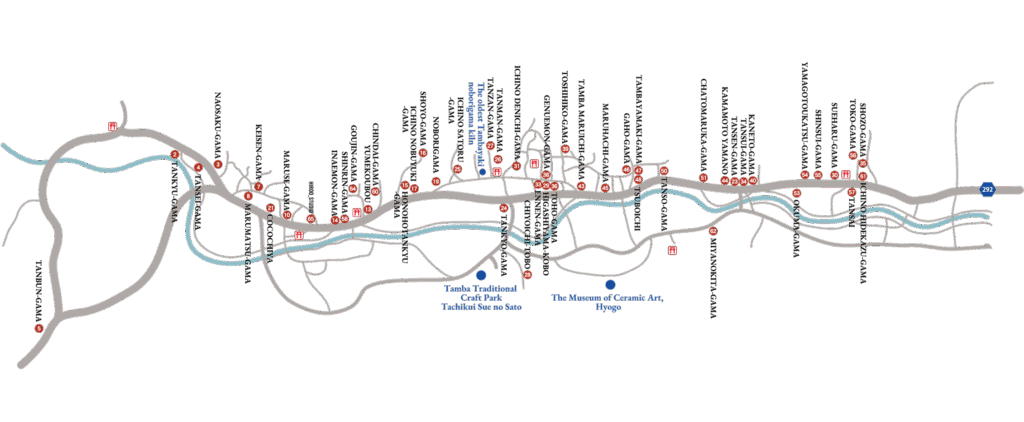

Tamba Ware was awarded “World Best Creative Journey” in the Creative Tourism Awards 2025 by the Creative Tourism Network, headquartered in Barcelona, Spain.
Tamba Pottery was recognized for its uniqueness, cultural heritage, and comprehensive approach to establishing the region’s livelihood as a sustainable tourism model. This is the first time in Japan that Tamba Pottery has been awarded in the “Creative Tourism Awards”.
Traditional noborigama kiln

The oldest existing Tambayaki noborigama kiln
The evolution of the kilns used for firing had a great impact on the style of Tambayaki. The earliest kilns used for firing Tambayaki were called anagama kilns, which were underground, tunnel-shaped kilns dug into slopes.
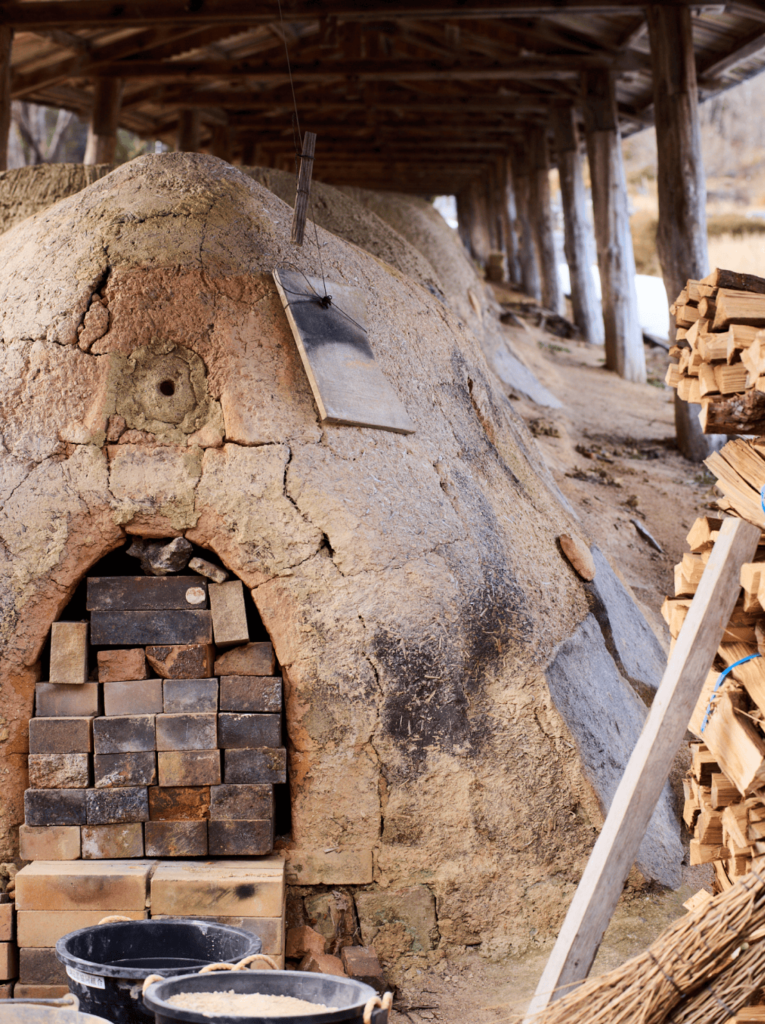
Firing took as long as half a month and since there was only one firing chamber, the amount of pottery that could be fired at any one time was limited.
Around 1611, the Korean-style half-underground noborigama kiln was introduced, ending the long era of the anagama kiln and ushering in the new noborigama era of Tambayaki. This technological innovation also led to a dramatic improvement in production efficiency.

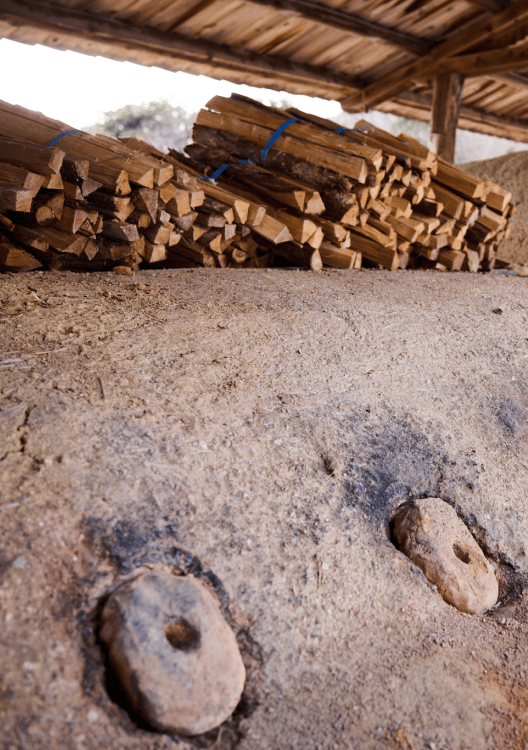
The oldest noborigama kiln in existence, which was built in 1895, is on the slope of a mountain in Kamitachikui and is designated as a Hyogo Prefecture tangible folk cultural property. This noborigama kiln is 46.8 meters long, 2.2 meters wide, 1.1 meters high, is sloped at an angle of 11-13 degrees, and has nine firing chambers. Today, it remains open to the public free of charge, and is a symbol of the production area that speaks of the historical value of Tambayaki.
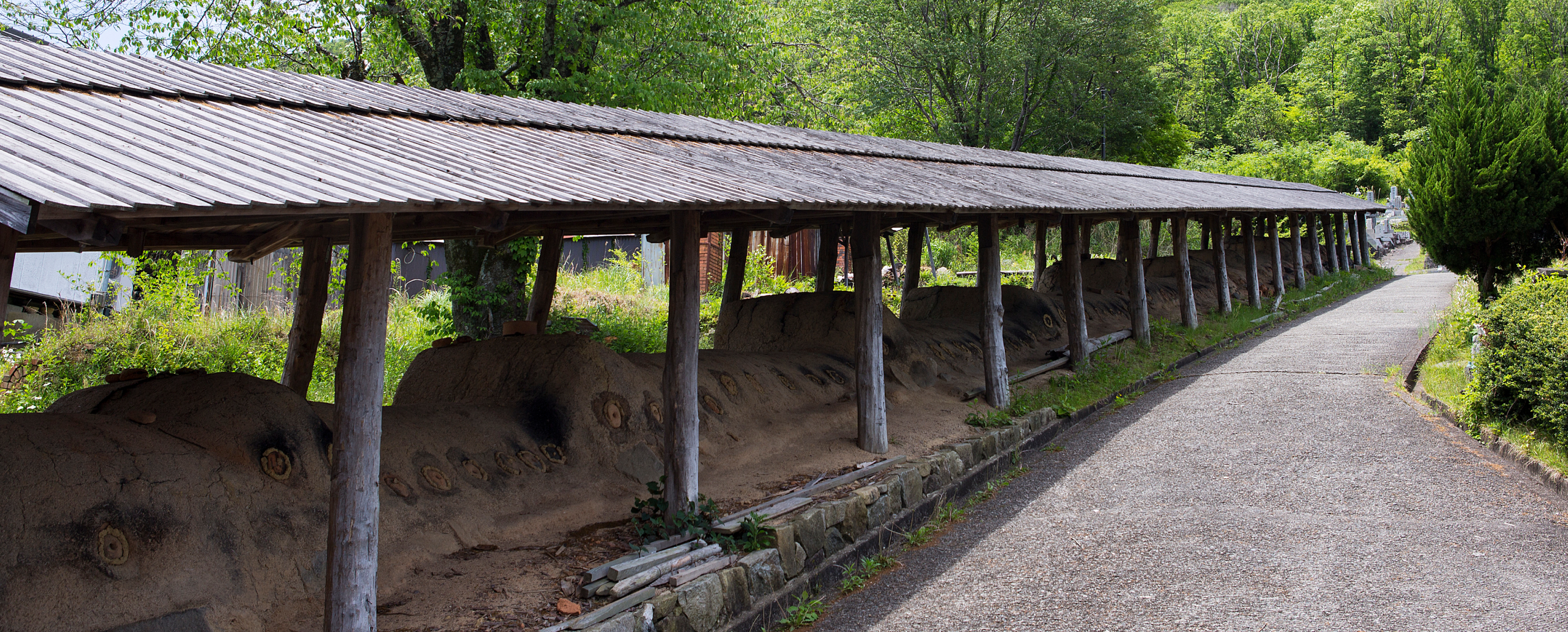
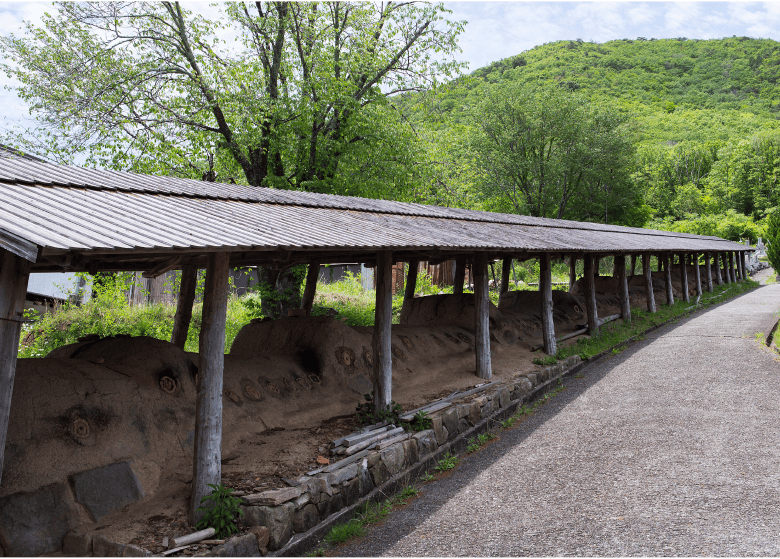
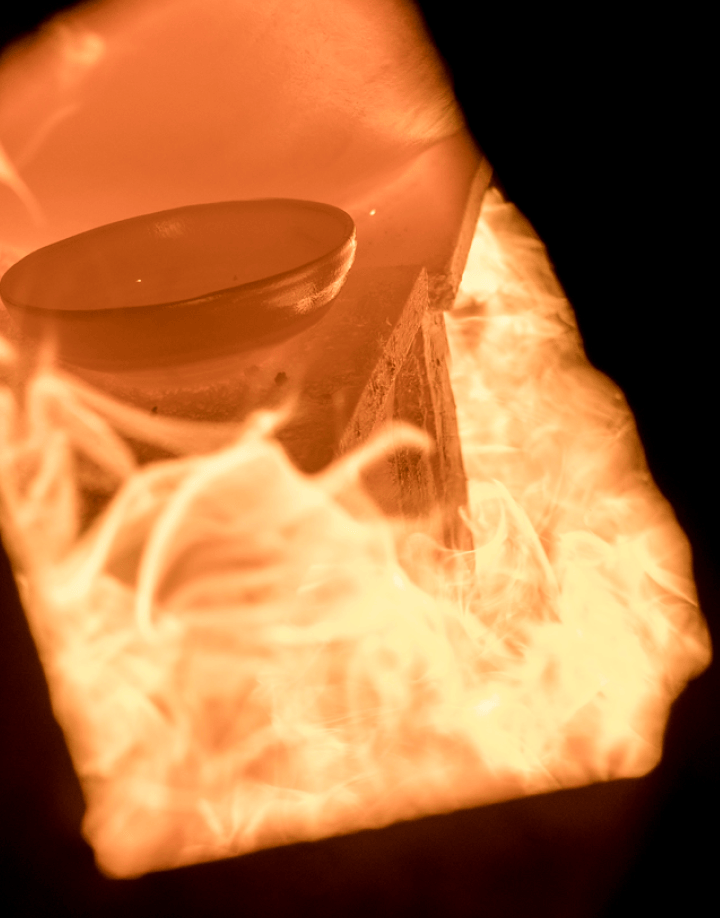
The beauty of color-changing transformations created by noborigama kilns
After the products are placed in the firing chambers of the noborigama kiln, the entrance is blocked with a “pillow” made of cubes of sun-dried bricks molded from mountain clay and then further sealed with clay.
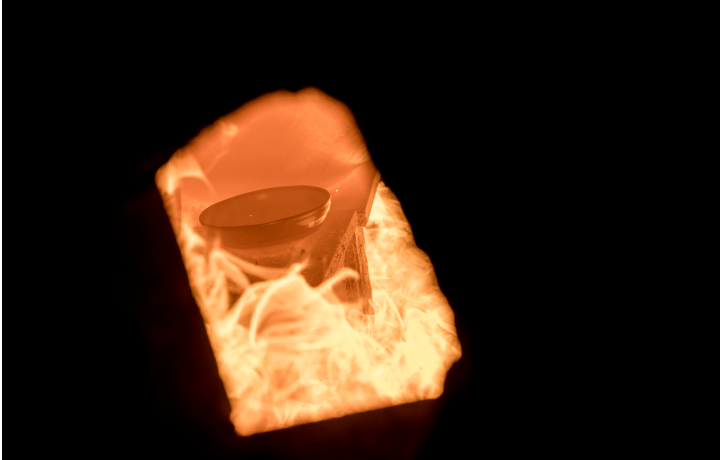
After 30-40 hours of nukume, the first stage of kiln-firing, during which the temperature is gradually increased, the flames inside the fire boxes travel upwards and the main firing process begins. The firing is fuelled by feeding split pine wood logs one after another through the holes on both sides of each fire box. The temperature in the firing chambers reaches approximately 1,300ºC and the whole firing process takes about 60 hours, carried out both day and night.
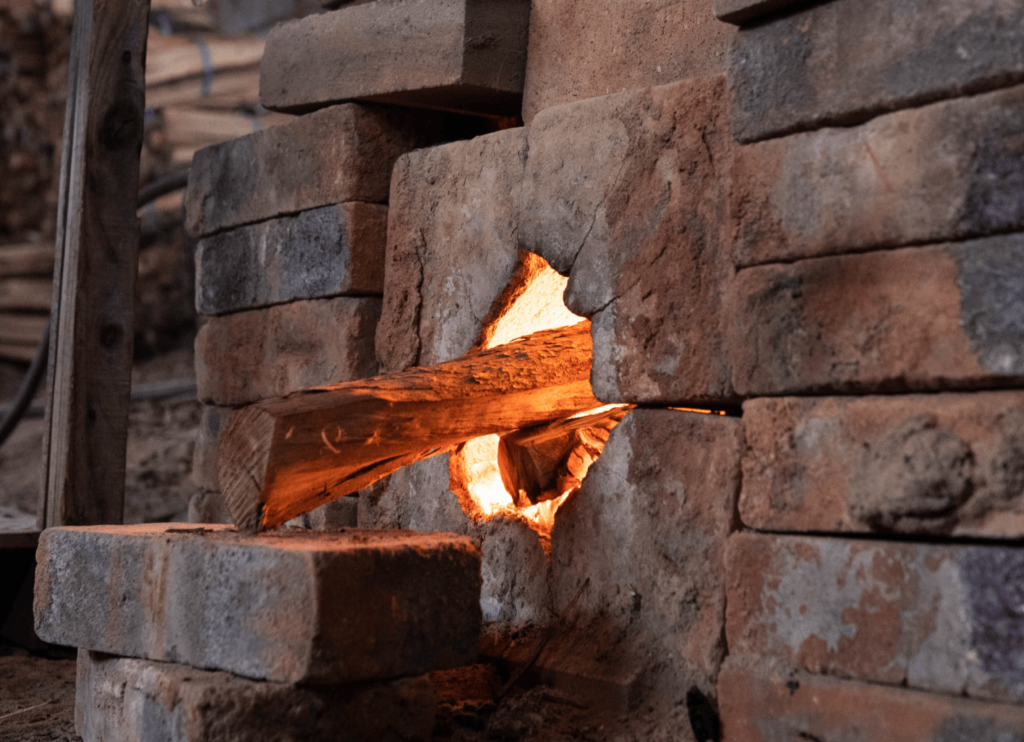
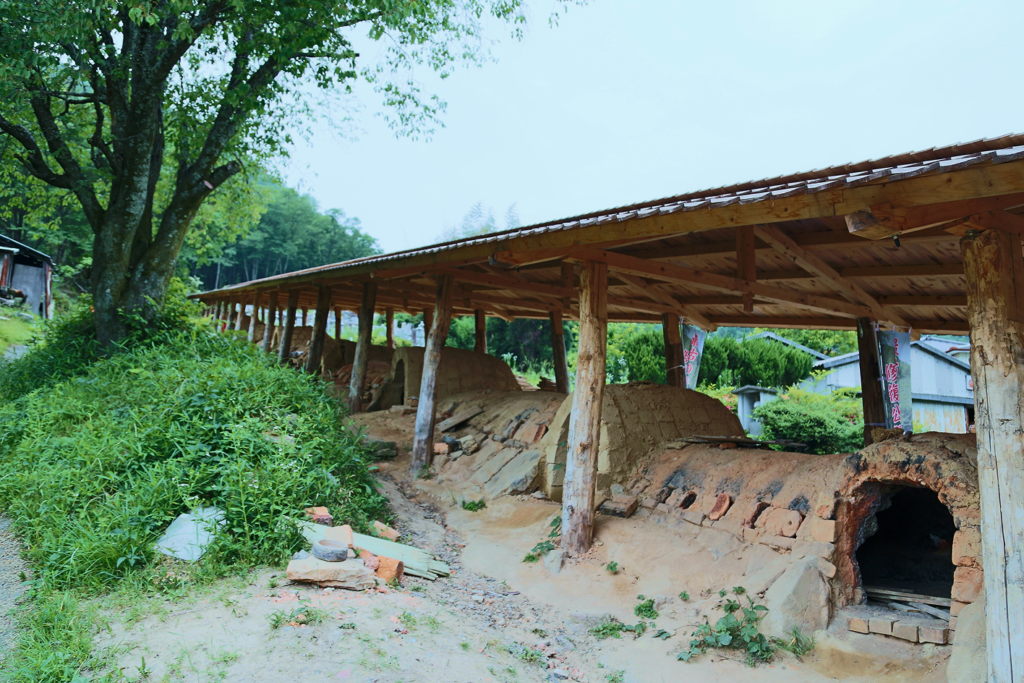
Firing in a noborigama kiln produces a brilliant, color-changing transformation through the fusion of artificial glazes and pine ash, the fuel.


Touring pottery workshops
where handcrafts and traditions come alive
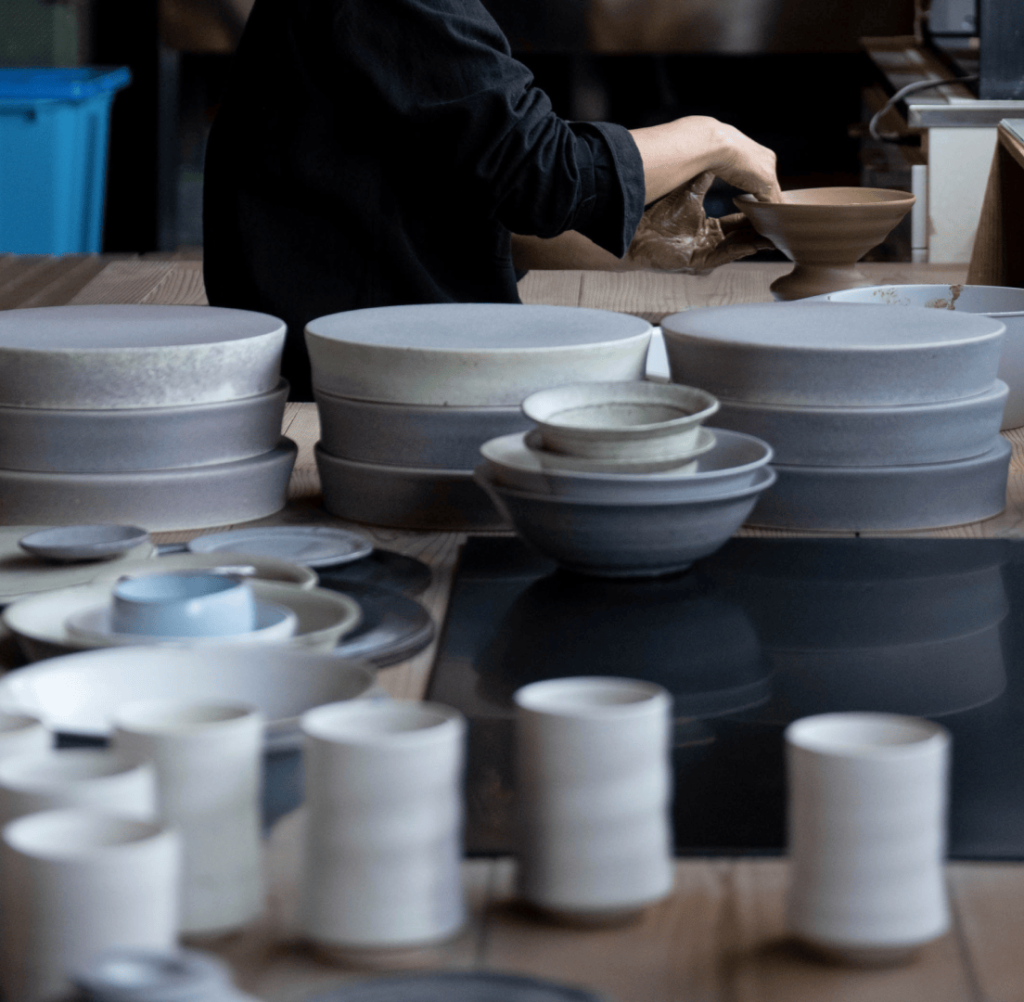
Workshop
In Tachikui, each potter has a small workshop next to their house, which shows us that the source of their culture is alive. It is not unusual to find potteries with their own anagama or noborigama kilns. Half-completed works and artisans’ tools used for making pottery are scattered haphazardly on the floor, and you can see beautiful mountains from the windows. In these places, where you can feel the traditions of Tambayaki and the life of craftspeople, a series of manual processes are carried out: kneading clay, shaping, glazing, and firing. You can immerse yourself in a cultural exchange through pottery by coming into contact with the skills and warm welcome of expert potters.
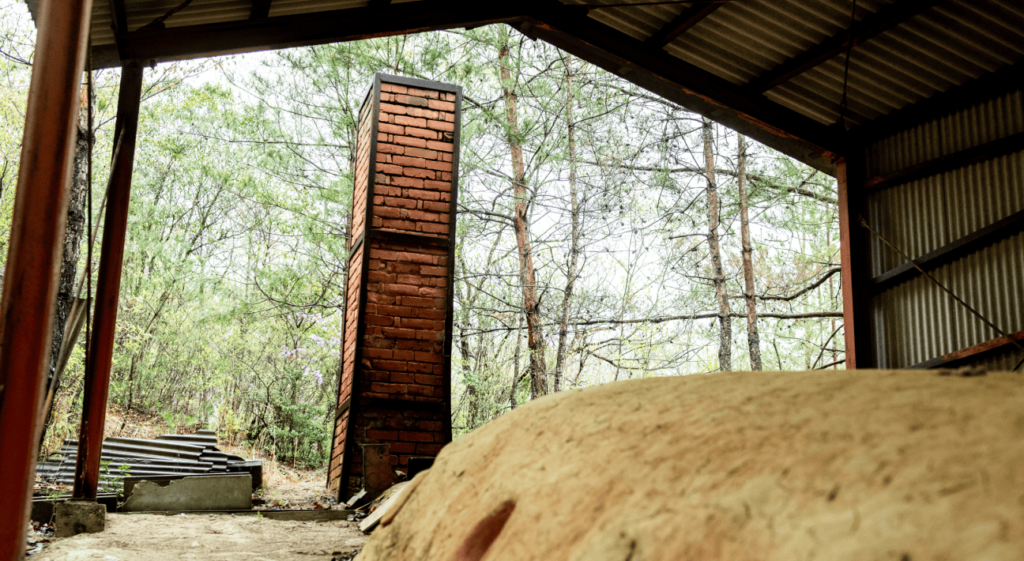
A personal pottery experience
Some potters offer instruction in the spaces that are overflowing with their daily lives. You can spend time surrendering yourself to the flow of Tambayaki’s surging, unbroken history while making pottery in the same way as the makers of these traditional crafts and breathing in sync with them. During breaks, enjoy a cup of Japanese tea and a leisurely conversation with the potter about Tachikui and the essence of pottery-making, which will definitely become rich memories of your trip.
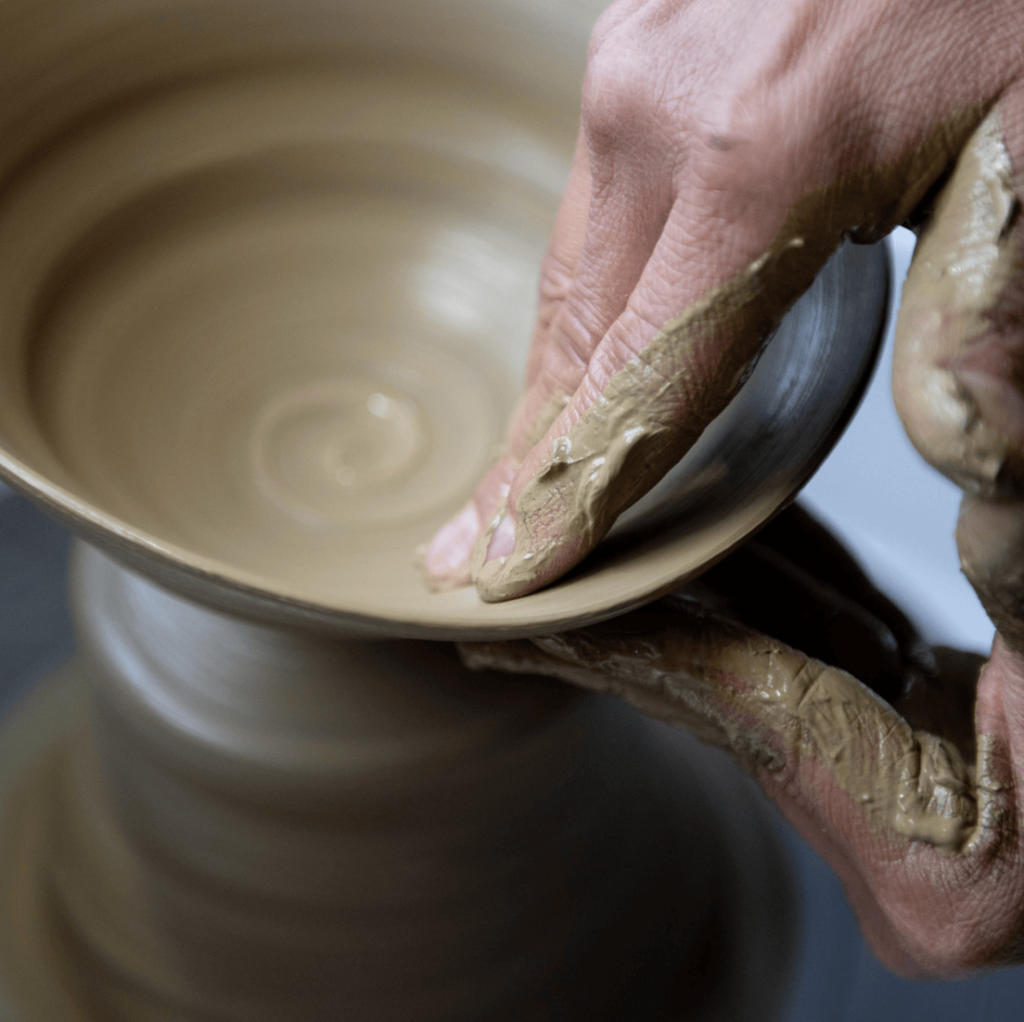
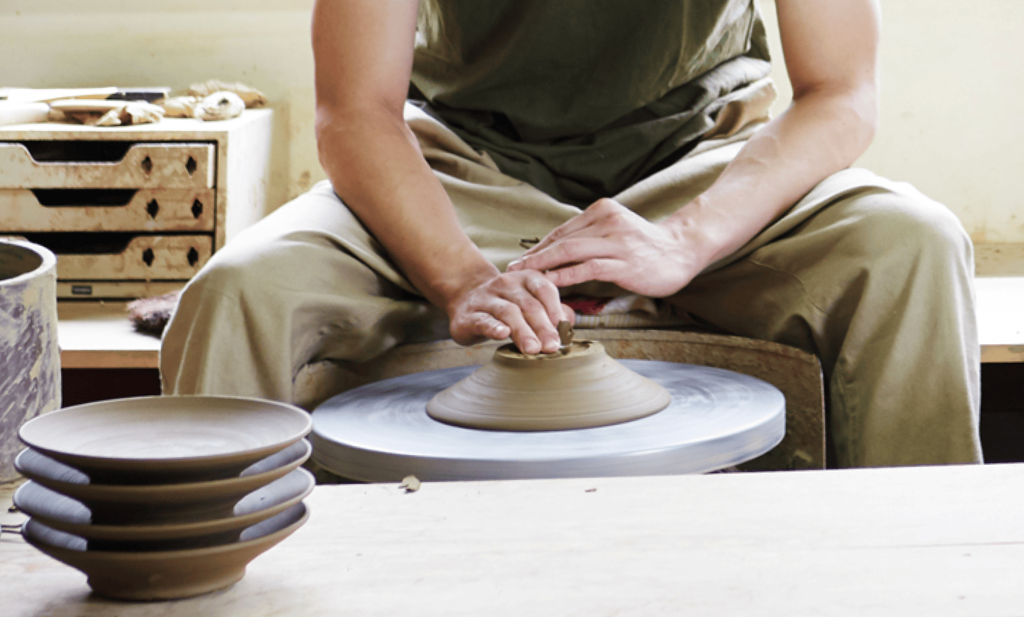
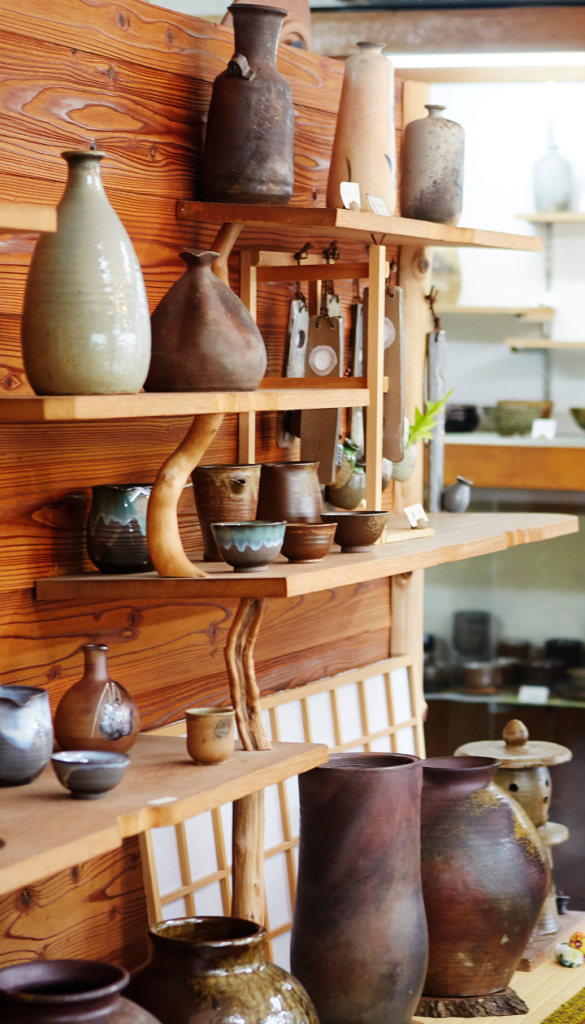
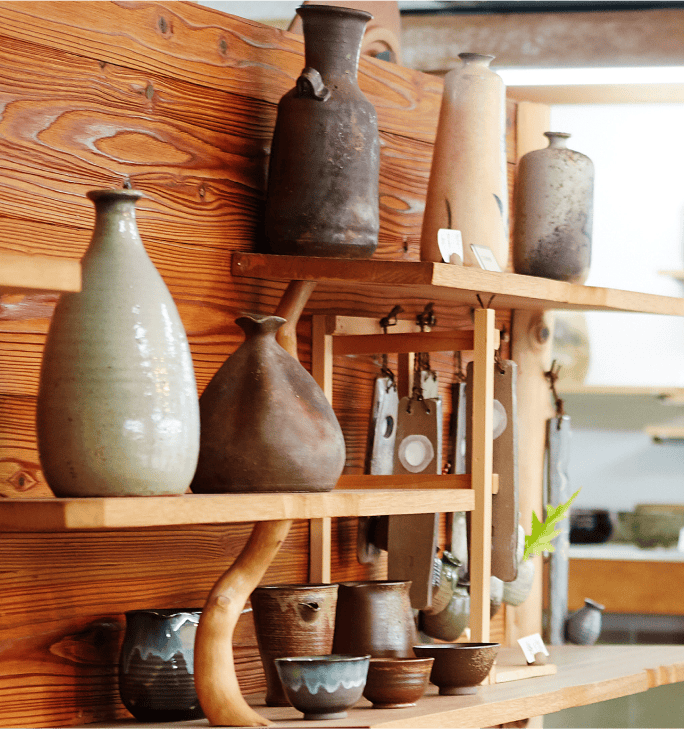
Pottery Gallery
Tambayaki is produced by craftspeople and artists, all of whom are engaged in pottery-making based on their own aesthetic sensibilities. Each pottery style has its own gallery where you can come across a variety of different, colorful creations. These range from unglazed yakijime pieces with a rich, earthy sheen fired in traditional wood-fired kilns, to delicate and beautifully-designed objets d’art and glazed vessels. The appeal of Tambayaki lies in the joy of having such diverse and varied creations coexisting in a single production area where you can enjoy a once-in-a-lifetime experience of meeting the friendly potters and artists themselves.

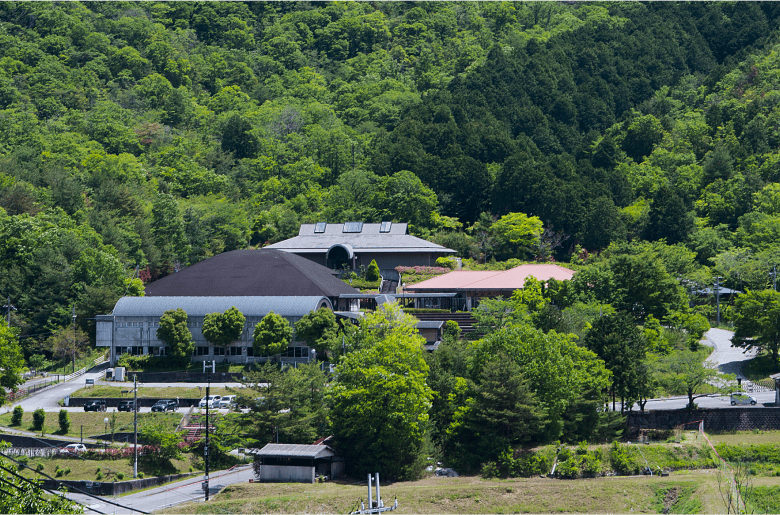
Tamba Traditional Craft Park Tachikui Sue no Sato
Tamba Traditional Craft Park Tachikui Sue no Sato features exhibits of new creations by contemporary artists as well as old Tambayaki pottery from the Kamakura to Edo periods. Equipped with an exhibition and sales center for 51 potteries, pottery classrooms, and restaurants, it is dedicated to the inheritance, creation, and promotion of the traditional culture of Tambayaki.
The park is open from
10:00 a.m. – 5:00 p.m
closed every Tuesday (open on holidays) and during the year-end and New Year holidays (December 29th – January 1st).

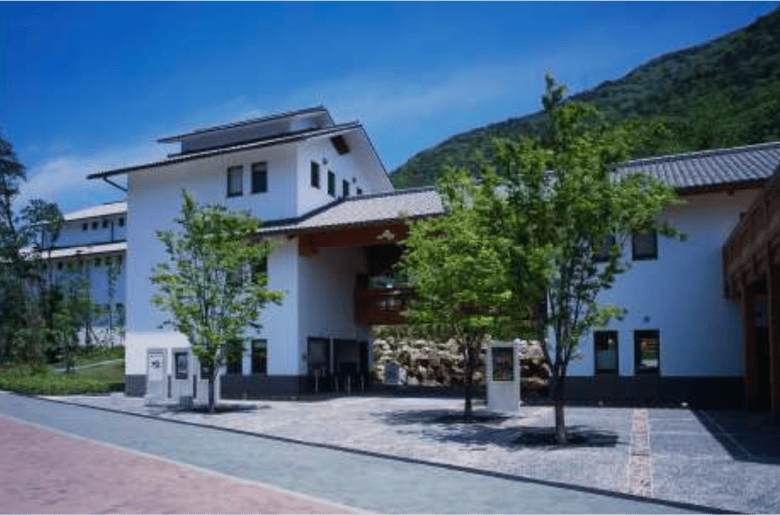
The Museum of Ceramic Art, Hyogo
Special exhibitions introduce a wide range of pottery creations from within Japan and overseas, and themed exhibitions feature the gallery’s collection of over 2,000 pieces of pottery, including Tambayaki and other pottery produced in Hyogo Prefecture. The gallery hosts the dining café Kokuzou and an observation deck from which you can enjoy a panoramic view of the home of Tambayaki, with a cluster of kilns set against the backdrop of Mount Wadenji.
The gallery is open from
10:00 a.m. – 5:00 p.m
closed every Monday (open on holidays).
For more information, please visit the website.
Getting to Tamba Traditional Craft Park Tachikui Sue no Sato from Kyoto or Osaka
By public transportation (train and bus)
■ Kyoto Station
- Take the JR Kyoto Line from Kyoto Station to Osaka Station (28 minutes).
- Take the JR Fukuchiyama Line from Osaka Station to Aino Station (52 minutes).
Take a Shinki Bus bound for ‘Shimizu’ (清水) or ‘Hyōgo-tōgei-bijutsukan’ (Hyogo Museum of Ceramic Art 兵庫陶芸美術館) for 10 minutes and get off at the ‘Sue-no-sato-mae’ (陶の郷前) bus stop. Alternatively, get off at ‘Tachikui-kokaido-mae’ (立杭公会堂前) and walk 5 minutes.Take the Shinki Bus bound for “Shimizu” or “Hyogo Ceramic Art Museum” from in front of the station.Get off at “Tou-no-sato-mae” (10 minutes). Or get off at “Rikkake Kokaido-mae” and walk 5 minutes.。
■ Shin-Osaka Station
- Take the JR Kobe Line from Shin-Osaka Station to Osaka Station (4 minutes).
- Take the JR Fukuchiyama Line from Osaka Station to Aino Station (52 minutes).
Take a Shinki Bus bound for ‘Shimizu’ (清水) or ‘Hyōgo-tōgei-bijutsukan’ (Hyogo Museum of Ceramic Art 兵庫陶芸美術館) for 10 minutes and get off at the ‘Sue-no-sato-mae’ (陶の郷前) bus stop. Alternatively, get off at ‘Tachikui-kokaido-mae’ (立杭公会堂前) and walk 5 minutes.
By car
■ Kyoto Station
- Take the Meishin Expressway from the Kyoto-Minami IC. Get off at the Sanda-Nishi IC of the Maizuru-Wakasa Expressway (approximately 55 minutes).
- 14 minutes by car from Sanda-Nishi IC to Tachikui Sue no Sato.
■ Shin-Osaka Station
- Take the Hanshin Expressway from the Toyonaka-minami exit. Get off at the Sanda-Nishi IC of the Maizuru-Wakasa Expressway (approximately 32 minutes).
14 minutes by car from Sanda-Nishi IC to Tachikui Sue no Sato.
* Taxis are not included due to difficulties in communicating in English.


